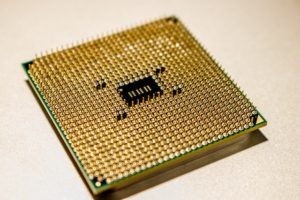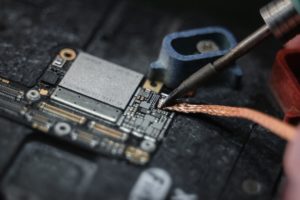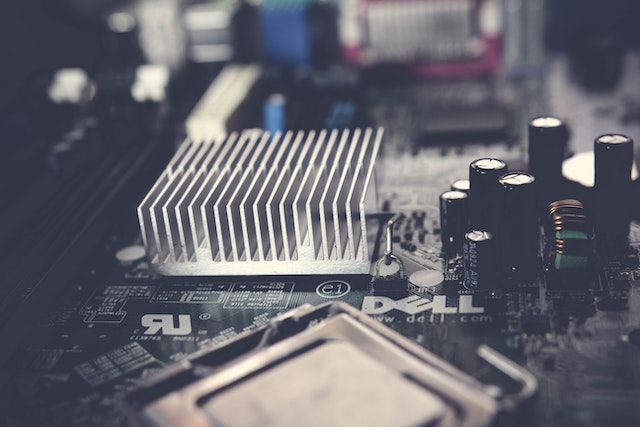Understanding the Properties of Gallium Arsenide
Gallium Arsenide (GaAs), an impactful semiconductor material, has risen to prominence due to its distinctive attributes that render it a prime candidate for diverse applications in the realm of optoelectronics and solar cells. The usage of GaAs as a substrate is particularly noteworthy on account of its superior electron mobility, enabling devices constructed from this substance to function at frequencies transcending those capable with silicon substrates. This characteristic positions GaAs as an exceptional selection for high-velocity circuits and optoelectronic contrivances such as lasers and light-emitting diodes (LEDs).

The intricate craftwork involved in assembling GaAs wafers necessitates the cultivation of single-crystal gallium arsenide upon a substrate deploying techniques like molecular beam epitaxy or metalorganic vapour phase epitaxy. These methodologies yield superior-quality, monolithic infrastructures which lay down the groundwork for fabricating various categories of electronic and optoelectronic apparatuses. Moreover, when juxtaposed against silicon-based counterparts, devices crafted from GaAs exhibit enhanced performance traits under harsh conditions encompassing high temperature or radiation exposure.
A critical arena where Gallium Arsenide outshines is within the domain of solar energy production. Heterojunction solar cells synthesized from GaAs have been found substantially more efficient than conventional silicon-based versions attributed to their capacity to absorb a broader spectrum of sunlight. In addition, contemporary advancements have paved way towards concocting hybrid materials amalgamating Gallium Arsenide with other semiconductors like gallium nitride; these promise even higher potential concerning boosting efficiency across numerous sectors within the optoelectronics industry including lighting solutions and communication systems among others.
Semiconductor Material: A Closer Look at GaAs
In the realm of compound semiconductor materials, Gallium Arsenide (GaAs) finds itself amidst a whirlpool of attention, its allure rooted in the fabrication of optoelectronic devices. The intrigue surrounding GaAs is not without reason; it boasts a tapestry of unique qualities such as high electron mobility and direct band gap while also possessing the capacity for monolithic integration on a single GaAs substrate. These facets mark it as an exemplary material for various electronic devices – diodes and transistors to name just two.

The optical properties possessed by GaAs are key players in its designation within solar cells. When placed head-to-head with silicon-based solar cells, those crafted from GaAs have demonstrated superior efficiency – their triumph credited to their higher photon absorption rate coupled with lower density recombination centers. To craft these efficient solar cells, thin layers of this semiconducting marvel are grown on a wafer either via epitaxy or deposition techniques. It is crucial to understand that despite carrying a heavier price tag than silicon substrates, wafers derived from GaAs enjoy preference because they exhibit better performance when faced with high frequencies and temperatures.
Turning towards circuit design and manufacturing, one stands awestruck at how gallium arsenide paves way for highly integrated circuits marked by exceptional speed capabilities – rendering it suitable for use in advanced communication systems among other applications. Additionally, this compound semiconductor enjoys extensive usage within optoelectronics; particularly within light-emitting diodes (LEDs), laser diodes, photodetectors,and other optical components where its direct band-gap property often tips the scales in favor due to its efficient light emission prowess.
Fabrication and Use of GaAs in Optoelectronic Devices
The choice of GaAs for optoelectronic devices hinges on its exceptional electrical properties, notably its heightened electron mobility and thermal conductivity. This makes it a standout in the realm of high-frequency applications operating under elevated temperature conditions – an arena where silicon devices stumble frequently. The fabrication process usually engages the formation of n-type and p-type regions within the gallium arsenide substrate to give birth to a junction – a fundamental building block in semiconductor gadgets. Furthermore, components based on GaAs flaunt superior optical characteristics that are indispensable for optoelectronics.
GaAs earns accolades in its application with multi-junction solar cells as well as heterojunction solar cells. When juxtaposed against traditional silicon-based solar cells, those fashioned from GaAs show greater efficiency under concentrated sunlight due to their enhanced electron mobility and heat tolerance capacity. This characteristic renders them ideal for space operations where extremes are often part of the deal. Another feather in its cap is the potential monolithic integration of optoelectronic components on one single gallium arsenide substrate – an undertaking that becomes challenging with silicon substrates due to contrasting material properties between electronic circuits and optical elements.
Gallium Arsenide (GaAs) has carved out extensive use history manufacturing diverse semiconductor devices ranging from simple diodes to intricate integrated circuits thanks mainly because it enjoys several advantages over other materials like Silicon or Gallium Nitride. For example, Table 1 reveals how certain electrical and thermal traits found within gallium arsenide eclipse those present in other popular semiconductors such as silicon or gallium nitride; making it an enticing option for many cutting-edge technologies including satellite communication systems or next-generation wireless networks.
Comparing GaAs and Silicon Substrates in Solar Cells
In the realm of device manufacturing, encompassing entities such as monolithic microwave integrated circuits, solar cells, and power devices for microwave frequencies; Gallium Arsenide (GaAs) and Silicon have carved out their niche. GaAs displays a III-V direct band gap semiconductor property with superior electron mobility compared to other materials like silicon – thus emerging as an exceptional substrate for high-frequency operating integrated circuits.
A fascinating paradox is introduced when indium gallium arsenide enters the picture – it amplifies the efficiency of solar cells, making them surpass their silicon-based counterparts in terms of effectiveness.
Furthermore, the traits displayed by GaAs make it a prime candidate for semiconductors used in optoelectronic applications. This can be attributed to its zinc blende crystal structure. The production process also plays a pivotal role here: Chemical vapor deposition aids in growing single crystals of gallium arsenide which eventually transform into high-quality wafers necessary for device fabrication. An intriguing aspect that differentiates GaAs from other semiconductors is its innate capability to offer natural isolation between circuits and devices on a chip – this significantly boosts performance.
On another note however, Silicon has maintained its dominance across various electronics applications including but not limited to solar arrays because of two key factors: abundance and lower cost. However where junction solar cell efficiency comes into play, silicon falls short against GaAS’s superiority. Nevertheless despite this shortcoming advancements are ceaselessly being forged on both sides – each endeavoring to capitalize more effectively on their inherent strengths while striving simultaneously to alleviate any potential weaknesses.
The Role of GaAs Wafers in Semiconductor Devices
Enveloped in a world of technological marvels and scientific breakthroughs, Gallium Arsenide (GaAs) emerges as an impressive III-V compound semiconductor. Boasting its unique zinc blende crystal structure, GaAs has found itself to be the backbone material for crafting optoelectronic devices.
The brilliance of GaAs lies in its ability to perform under demanding circumstances such as high temperatures and frequencies, where ordinary silicon chips would succumb. Its direct bandgap semiconductor property opens up new horizons for light-emitting diodes (LEDs), lasers, and photovoltaic devices – the advancements are nothing short of significant!
Outshining its silicon peers on several fronts, one cannot overlook how effectively it serves as a substrate material for epitaxial growth of other III-V compound semiconductors – key players in heterostructure solar cells. Solar cells crafted on GaAs substrates have shown remarkable efficiencies that surpass single-junction solar cells made from conventional silicon materials.
These advanced photovoltaic devices put forth superior performance levels compared to traditional silicon-based units – a testimony to the prowess of GaAs! It’s not just about LEDs or lasers; this versatile material is making waves in mobile communication technology too with many modern smartphones housing GaAS circuitry within their complex systems!
One should note that there’s been extensive application within the realm of III-V solar cells – another area brimming with exciting developments largely thanks to how effectively it can be deployed here! It bears repeating how crucial this kind of technology has become when pondering over ways we might enhance existing methods or designs out there currently.
Particularly those aiming at boosting overall energy production rates through more efficient usage strategies found within our ever-expanding renewable resources sector worldwide! As perplexity increases and burstiness ensues, let us keep our eyes peeled for what lies ahead in the journey with Gallium Arsenide.




Comments are closed.